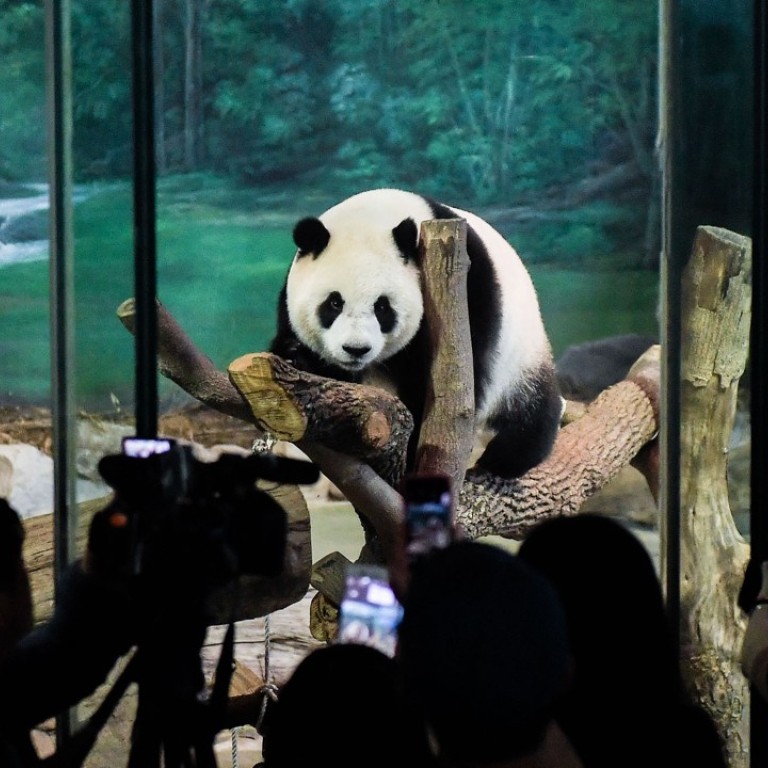
Is the giant panda worth saving? China’s big profits have the answer
Research is the first study quantifying the monetary returns of China’s panda protection programme
Protecting giant pandas and their habitats is expensive, but the monetary returns are estimated to be between 10 and 27 times as much as the costs, according to a group of international zoologists.
It is the first quantitative study on the topic, which has long been debated, whether China’s spending on the species – about US$255 million a year – is worth it.
“I have always wanted to quantify the costs and benefits of protecting pandas, even before the species was downgraded,” said Wei Fuwen, a conservation biologist at the Chinese Academy of Sciences and lead scientist of the study.
In 2010, China’s panda nature reserves generated US$709 million from cultural services such as tourism and loaning out pandas to zoos overseas, and US$1.9 billion from improved ecosystems, by providing a better environment to locals and wildlife in areas where there are panda reserves, the study said.
Combining these two figures less the cost of US$255 million, gives a total for 2010 of US$2.3 billion, a 923 per cent return for that year.
The study was published in the scientific journal Current Biology last week.

The giant panda was downgraded from “endangered” to “vulnerable” by the International Union for Conservation of Nature in September 2016. The Switzerland-based organisation cited the 17 per cent rise in the bear’s population in the decade up to 2014, when a nationwide census found 1,864 of them in the wild in China.
“The downgrading is a sign that society’s investment has started to pay off in terms of panda population recovery,” Wei said.
China opened its first nature reserves for the bears about four decades ago, he said. It now has 67, which safeguard about two-thirds of the giant pandas in the wild, according to the World Wide Fund for Nature.
“Some argue it’s not worth pouring millions of dollars just to save one species, because they didn’t see the benefits to the whole ecosystem, where thousands of other animals live,” said Li Sheng, a zoology researcher with Peking University in Beijing who was not involved in the study.
“Dr Wei’s research turned such benefits to monetary returns, making it easier for people to understand,” he said.
With its unrivalled public appeal, the giant panda serves as a flagship species when it comes to protecting wildlife and their habitats, the study said. They are known as an umbrella species because their habitats also provide a home to other species, as these reserves have some of the greatest biodiversity in the world.
As well as helping other kinds of wildlife, the giant panda reserves help local people wanting to grow crops and graze animals. They also have access to plentiful supplies of water and firewood.
At the panda centre in Chengdu, the entrance fee is 58 yuan (US$8), however, this income from tourism accounts for less than a third of the overall yield from the country’s panda protection programme.
The cultural impact of the animals globally can really be appreciated by looking at the bigger picture – the use of the panda image in films, brand logos and video games. The number is estimated to be about US$6.9 billion for 2010, bringing the annual return to 27-fold, the study said.
“If the panda image were a registered trademark, like Mickey Mouse, it is likely that these merchandise sales could easily generate enough funds to support the entire panda conservation programme in China,” said Wei, who is also a member of the General Assembly under the Chinese Academy of Sciences.
This latest study can hopefully convince those sceptics who think protecting pandas is a waste of money, he said. For example, in 2009, British naturalist and television show host Chris Packham said the species was not strong enough to survive on its own and that the millions spent preserving pandas could be put to better use.
Peking University’s Li said that while the panda’s cuteness helped to draw more public attention and government funds, the money spent on the species also benefited other wildlife.
“No one can resist that cuteness,” he said.


